Introduction to Lead Generation

What is Lead Generation
Lead generation is the start of the sales journey, where you draw in people who haven't heard of your business and get them interested in what you offer. It's about grabbing the attention of potential buyers and getting them to consider your products or services.
This step is vital because it helps guide these potential customers from just knowing about your brand to deciding to buy something from you.
The main aim here is to build a relationship with these prospects, guiding them step by step until they're ready to make a purchase.
What is a Lead
A lead is an individual or organization that has expressed interest in what you offer, typically through engaging with your marketing efforts or providing contact information.
Types of Lead

Leads typically are classified into three main types in a sales funnel:
Sales Qualified Leads (SQLs)
- SQLs are leads that have been evaluated by the sales team and deemed ready for direct sales engagement.
- These leads often come from targeted marketing efforts or lead generation strategies that focus on capturing the interest of potential customers who have a high intent to purchase.
- According to Salesforce, SQLs represent a critical juncture in the sales process, with a higher likelihood of conversion compared to other leads.
Marketing Qualified Leads (MQLs)
- MQLs are characterized by their engagement with marketing content but are not yet ready to make a purchase.
- Actions like downloading a whitepaper, signing up for a webinar, or engaging with social media content can indicate an MQL.
- HubSpot reports that nurturing MQLs properly can increase sales opportunities by up to 20%, underscoring the importance of targeted content and communication.
Product Qualified Leads (PQLs)
- PQLs have used your product (usually through a free trial or a freemium model) and have shown interest in becoming paying customers.
- This direct product experience makes them more likely to purchase, as evidenced by their actions, such as using key features or exceeding usage limits.
- A study by Totango suggests that PQLs convert at a much higher rate than other lead types, making them a valuable focus for sales teams.
Why Lead Generation is Important
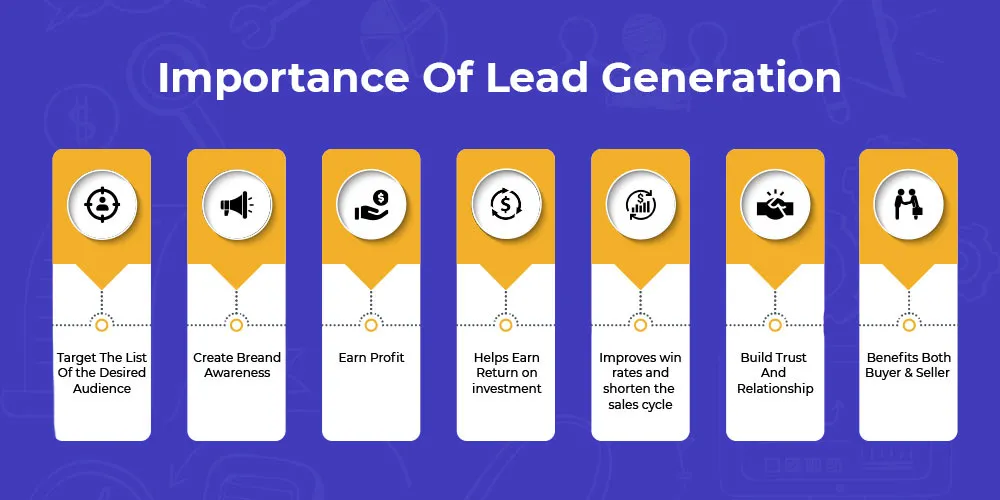
Lead generation is a crucial aspect of any business strategy for several key reasons, bridging the gap between marketing efforts and sales results. Here’s why lead generation is so important:
1. Fuels the Sales Pipeline
Lead generation helps in continuously filling the sales pipeline with potential customers at various stages of the buying process. This ensures that businesses have a steady stream of prospects to engage with, increasing the chances of converting them into paying customers.
2. Enhances Targeting
It allows businesses to target specific segments of the market. Through lead generation strategies, companies can focus their resources on reaching the most promising prospects based on demographic, psychographic, and behavioral data. This targeted approach improves the efficiency and effectiveness of marketing campaigns.
3. Increases Brand Awareness
The process of generating leads also increases brand awareness and establishes brand presence in the target market. Even if leads do not immediately convert into sales, it introduces potential customers to the brand, laying the groundwork for future sales.
4. Improves Revenue
A direct correlation exists between effective lead generation and increased revenue. Businesses that excel in lead generation and management see a 9.3% higher sales quota achievement rate. This is because a more significant number of high-quality leads results in more sales opportunities.
5. Enables Business Growth
Consistent lead generation is essential for business growth. It not only helps in acquiring new customers but also contributes to market expansion and the exploration of new business opportunities. By understanding and responding to the evolving needs of leads, businesses can innovate and adapt their offerings accordingly.
6. Facilitates Better Customer Insights
Through interactions with leads, businesses gain valuable insights into customer needs, preferences, and behaviors. This information is vital for tailoring products, services, and marketing messages to meet the market demands more effectively, leading to improved customer satisfaction and loyalty.
7. Cost-Effectiveness
Digital lead generation strategies, in particular, offer a cost-effective way to reach potential customers compared to traditional advertising methods. For example, content marketing costs 62% less than traditional marketing and generates about 3 times as many leads.
What is a Lead Generation Process to Increase Sales
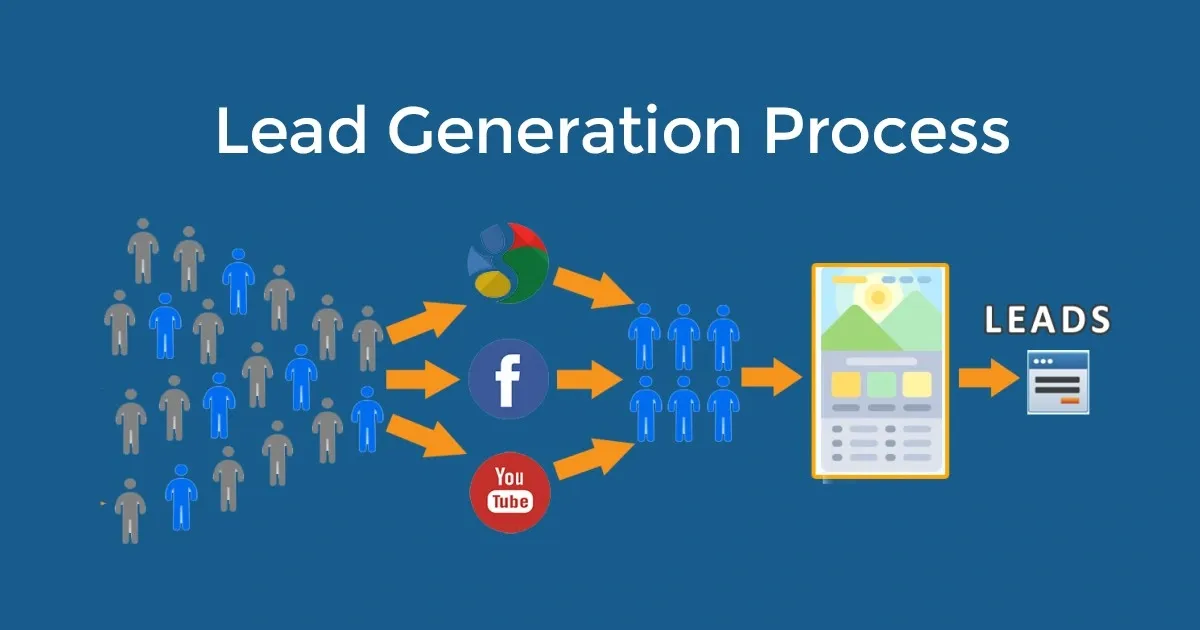
1. Identifying Your Target Audience
Understanding who your ideal customers are is the foundation of any successful lead generation strategy.
- Demographics and Psychographics: Gather data on the age, location, gender, interests, and behaviors of your target market. For instance, a B2C company might find that 70% of its customers are women aged 25-34, who value sustainable living.
- Market Research: Utilize surveys, interviews, and analysis of social media trends to further refine your understanding of your target audience’s needs and preferences.
2. Choosing the Right Channels to Attract Leads
Selecting where to focus your marketing efforts is pivotal in reaching your audience where they are most active.
- Digital Presence Analysis: Data shows that in 2023, social media platforms like Instagram and Facebook had engagement rates of 1.22% and 0.18%, respectively, highlighting the importance of choosing the right platform based on your audience’s preferences.
- Multi-Channel Approach: Integrating various channels such as email marketing, which boasts an average ROI of $42 for every $1 spent, with social media campaigns can significantly increase your reach and engagement.
3. Employing Tools and Technologies
Leveraging the right tools and technologies can streamline your lead generation process, making it more efficient and scalable.
- CRM Systems: Salesforce reports that CRM applications can increase sales by up to 29%.
- Automation Tools: Automation can lead to a 14.5% increase in sales productivity and a 12.2% reduction in marketing overhead.
4. Generating and Nurturing High-Quality Leads
Attracting leads is one thing, but nurturing them towards a sale is another. This stage is where your content and engagement strategies really play a role.
- Content Marketing: High-quality, informative content can generate 3 times as many leads as outbound marketing at 62% less cost.
- Lead Nurturing Campaigns: Companies that excel at lead nurturing generate 50% more sales-ready leads at 33% lower cost.
5. Measure and Optimize
What gets measured gets managed. Tracking the performance of your lead generation process allows you to refine and improve.
- Analytics: Only 22% of businesses are satisfied with their conversion rates, per Econsultancy, highlighting the need for continuous optimization.
- A/B Testing: Optimizely found that A/B testing on landing pages can increase conversions by up to 25%.
Types of Lead Generation Process

There are primarily two types of lead generation processes: Inbound Lead Generation and Outbound Lead Generation. Each serves a unique purpose in the marketing strategy and employs different tactics to attract leads.
Inbound Lead Generation
Inbound lead generation focuses on creating and distributing content that draws customers to your company. This strategy leverages various platforms to ensure visibility where your target audience is most active.
- Content Marketing: Utilize blogs, videos, infographics, and eBooks to provide valuable information that addresses the needs and questions of your target audience. For example, companies that blog regularly generate 67% more leads per month than those that don't.
- SEO and SEM: Optimize your website and content for search engines to improve visibility in results. High-ranking pages on Google receive 36.4% of the traffic missed by lower-ranking pages, highlighting the importance of a strong SEO strategy.
- Social Media Engagement: Engage with your audience on social media platforms by sharing informative content, answering questions, and participating in discussions. Nearly 80% of marketers claim that social media is the most effective channel for generating leads.
Outbound Lead Generation
Outbound lead generation involves proactively reaching out to customers through various channels. This approach is more traditional and includes direct contact methods.
- Cold Calling: Despite being considered outdated by some, cold calling can be effective if done correctly. Tailoring your message to the recipient and offering clear value can lead to a success rate of 2-3%.
- Email Campaigns: Send targeted, personalized emails to a list of potential leads. Personalized email messages improve click-through rates by an average of 14% and conversions by 10%.
- Paid Advertising: Utilize pay-per-click (PPC) ads, social media ads, and display ads to reach a broader audience. Well-targeted PPC campaigns can increase brand awareness by up to 80%.
Why Each Process Matters
- Inbound Lead Generation is vital for building trust and establishing a relationship with potential customers. It attracts leads that are already interested or in need of your product, making the sales process smoother.
- Outbound Lead Generation plays a crucial role in reaching out to potential customers who may not be aware of your brand or product. It's an active approach to fill the top of the sales funnel and identify new markets.
How to Generate or Attract Leads for Your Business

Attracting high-quality leads is vital for improving conversion rates and achieving a higher return on investment in your marketing efforts. Here's how to focus your strategy to attract leads that are more likely to convert into paying customers.
Develop Targeted Content
Start by understanding the specific needs and interests of your ideal customer profile. Tailored content speaks directly to their pain points, increasing engagement and the likelihood of conversion.
- Blog Posts and Articles: Focus on topics that address the specific challenges and questions of your target audience. High-quality, informative content establishes your brand as a thought leader and attracts leads looking for solutions.
- Case Studies and Testimonials: Share success stories of how your product or service solved real-world problems. This not only builds credibility but also attracts leads facing similar issues.
Leverage SEO Strategies
Optimizing your content and website for search engines ensures visibility to those actively searching for solutions you offer.
- Keyword Optimization: Research and target long-tail keywords that your ideal customers are likely to use. These keywords have less competition and a higher conversion rate because they are more specific.
- User Experience (UX): Ensure your website is easy to navigate and fast to load. A good UX not only improves SEO rankings but also keeps potential leads engaged on your site longer.
Utilize Social Media Wisely
Identify which platforms your target audience uses most and create content that resonates with them. Engaging with your audience through these channels can build trust and encourage them to explore your offerings.
- LinkedIn: Especially effective for B2B companies, LinkedIn allows you to connect with industry professionals and share content that positions your company as a solution provider.
- Facebook and Instagram Ads: Use targeted advertising with detailed demographic and psychographic criteria to reach potential leads who are most likely to be interested in your products or services.
Implement a Referral Program
Referrals are often high-quality leads because they come with a built-in level of trust. Encourage your current customers to refer others.
- Incentives: Offer rewards to both the referrer and the new lead. This could be discounts, freebies, or access to exclusive content.
- Easy Process: Make sure your referral program is easy to understand and participate in. The simpler it is, the more likely people will be to refer others.
Conduct Webinars and Workshops
Offering free webinars or workshops on topics of interest to your target audience can be a powerful way to gather high-quality leads.
- Value-Driven Content: Focus on delivering real value and actionable insights during these sessions. Attendees are more likely to engage with your brand if they find the content helpful.
- Registration Data: Use the registration process to collect valuable information about the participants, which can help you qualify leads based on their interest and engagement.
Optimize Landing Pages
Your landing pages are where potential leads convert, so they must be optimized for clarity, speed, and relevance.
- Clear Value Proposition: Each landing page should clearly state what the visitor will gain by providing their contact information, whether it's access to a whitepaper, a free trial, or a webinar signup.
- A/B Testing: Regularly test different elements of your landing pages, such as headlines, call-to-action buttons, and images, to see what works best in converting visitors into leads.
Use Paid Advertising
Paid advertising can quickly increase visibility and generate leads by targeting specific audiences on search engines and social media platforms.
- Pay-Per-Click (PPC) Advertising: Google Ads can yield an average ROI of $2 for every $1 spent by placing your site at the top of search results for relevant queries.
- Social Media Ads: Platforms like Facebook offer sophisticated targeting options to reach specific demographics, interests, and behaviors.
Offer Lead Magnets
Lead magnets are free items or services given away to collect contact details of potential leads. They must provide value to your target audience to be effective.
- Webinars can generate leads by offering valuable information or training sessions in exchange for registration details. Webinars are known for high engagement rates and can convert attendees into leads at a high rate.
- Free Trials and Demos allow potential customers to experience your product or service firsthand, providing their contact information to access the trial.
Email Marketing
Email marketing remains one of the effective ways to nurture leads and convert them into customers.
- Segmentation: Tailor your email content based on the interests and behavior of different segments of your audience to increase engagement and conversions.
- Personalization: Emails with personalized subject lines are 26% more likely to be opened. Use the recipient's name and relevant information to capture their attention.
How to Identify High Quality Leads

Identifying high-quality leads is a critical step in ensuring your sales efforts are focused on the prospects most likely to convert into paying customers.
After attracting leads through various strategies, the next challenge is to sift through them to find those with the highest potential. Here's an in-depth look at how to identify high-quality leads:
1. Lead Scoring
Lead scoring is a methodology used to rank prospects against a scale that represents the perceived value each lead represents to the organization. The higher the score, the more valuable the lead is considered to be.
- Demographic Information: Score leads based on how well they match your ideal customer profile. Factors might include industry, company size, location, and job role.
- Engagement Level: Assign points based on the lead’s interactions with your brand, such as website visits, content downloads, webinar attendance, and email opens. More engagement typically indicates a higher interest level.
- Behavioral Indicators: Certain actions, like requesting a demo or filling out a contact form, can signal a readiness to purchase. These actions should carry significant weight in your scoring model.
2. Lead Segmentation
Segmentation involves categorizing your leads based on specific criteria, which can help tailor follow-up efforts more effectively.
- Interest Segments: Group leads based on the products or services they’ve shown interest in. This allows for more personalized communication.
- Activity Level Segments: Separate active users who frequently engage with your content from those who don’t. Active engagement is often a sign of a high-quality lead.
3. Analyzing Lead Source
Not all lead generation channels produce the same quality of leads. By analyzing the source, you can identify which methods are bringing in the most valuable prospects.
- High-Performing Channels: Evaluate which channels (SEO, PPC, social media, email marketing) have historically resulted in the highest conversion rates.
- ROI Analysis: Compare the return on investment from different channels to prioritize those that not only attract leads but convert them at a higher rate.
4. Qualification Questions
Including qualification questions in your lead capture forms can provide immediate insights into the lead’s potential.
- BANT Criteria: Questions based on Budget, Authority, Need, and Timing can help gauge a lead’s readiness to buy.
- Pain Points and Solutions: Asking leads to identify their main challenges or what solutions they are seeking can help you assess whether your product or service is a good fit.
5. Monitoring Social Media Engagement
Social media platforms can offer valuable insights into a lead’s interest and engagement level.
- Direct Interactions: Leads who actively comment on your posts, share your content, or engage with your brand on social media might be more interested than those who don’t.
- Social Listening: Tools that monitor mentions of your brand can help identify leads actively seeking solutions in your industry.
6. Tracking Email Engagement
Email interactions provide crucial data points in identifying high-quality leads.
- Open and Click-Through Rates: High rates suggest that the lead finds your content relevant and engaging.
- Conversion Actions: Pay attention to leads who click on high-intent links, such as pricing pages or product demos.
7. Sales Team Feedback
Direct feedback from your sales team can offer qualitative insights that might not be evident from data alone.
- Lead Quality Assessments: After engaging with leads, sales representatives can provide feedback on their readiness and interest level.
- Patterns and Trends: Sales insights can help identify common characteristics of high-quality leads, which can be used to refine lead scoring criteria.
8. Lead Nurturing Behavior
The way leads respond to your nurturing efforts can signal their quality. Leads that actively engage with your nurturing campaigns, such as personalized email sequences or targeted content offers, are often more interested and closer to making a purchase decision.
- Content Downloads: Tracking which leads download your most persuasive and valuable content can help identify those with serious interest.
- Webinar Attendance: Leads that take the time to attend webinars, especially those that are product-specific or solution-oriented, are often high-quality prospects.
Role of Sales Team to Generate and Identify High Quality Leads
The sales team plays a crucial role in both generating and identifying high-quality leads through direct engagement, insights, and collaboration with marketing:
Direct Engagement: Sales professionals can generate leads through networking, referrals, and social selling, directly engaging with potential customers and using their expertise to attract interest.
Lead Qualification: By applying their firsthand experience with customers, sales team members can effectively qualify leads, distinguishing high-quality prospects based on their needs, behaviors, and readiness to purchase.
Feedback Loop: Sales teams provide valuable feedback to marketing on lead quality, effectiveness of different channels, and content relevance, helping to refine lead generation strategies.
Market Insights: Their direct interaction with customers and prospects gives sales teams unique insights into market trends, customer pain points, and preferences, which can inform targeted lead generation efforts.
Collaboration with Marketing: Close collaboration between sales and marketing ensures that lead generation efforts are aligned with sales goals and the characteristics of an ideal customer profile, enhancing the overall quality of leads generated.
8 Effective Lead Generation Strategies to Increase Sales

1. Leverage Social Proof to Build Trust
Customer Reviews and Testimonials
Displaying customer reviews and testimonials prominently on your website and sales pages can significantly impact purchasing decisions. Approximately 92% of consumers read online reviews, which means positive social proof can sway potential leads to engage with your brand.
Gather Customer Reviews by encouraging satisfied customers to leave reviews on your website, Google My Business, and social media pages. Consider sending post-purchase emails asking for feedback.
Case Studies
Develop in-depth case studies that showcase how your product or service solved a problem for a customer. This not only provides social proof but also demonstrates your solution’s value in a real-world context.
2. Optimize Your Website for Conversions
Landing Page Optimization
Ensure each landing page is focused on a single offer, with a clear and concise message. A/B testing can reveal the most effective elements, potentially increasing conversion rates by up to 300%.
Use tools like Google Analytics and heat mapping software to analyze visitor behavior. Test different headlines, CTAs, and layouts to determine what converts best.
Chatbots for Instant Engagement
Implementing chatbots can provide immediate assistance to visitors, answering questions and guiding them through the lead gen process. Businesses using chatbots have seen a 67% increase in sales leads.
3. Create High-Value Lead Magnets
Educational Content
Offer ebooks, whitepapers, or webinars that provide valuable knowledge in exchange for contact information. Tailor content to address specific pain points or questions your target audience has.
Research your audience to find out what information they value most. Use tools like Google Keyword Planner and forums related to your industry to identify popular topics.
Free Tools or Trials
Providing free tools, assessments, or trial periods can attract leads by offering them a risk-free way to experience your product or service’s value firsthand.
4. Utilize Email Marketing Segmentation
Segment Your Email List
Tailor your email marketing campaigns by segmenting your list based on demographics, behavior, or stage in the sales funnel. Segmented email campaigns can achieve up to a 760% increase in revenue.
Use your email marketing software to segment your list based on the data you’ve collected (e.g., purchase history, website activity). Create specific lists for different segments of your audience.
Personalized Follow-Ups
Send personalized follow-up emails based on the recipient’s previous interactions with your brand. Personalization can lead to a 26% increase in open rates and significantly higher engagement.
5. Employ Retargeting Strategies
Retargeting Ads
Use retargeting ads to re-engage visitors who have left your website without taking action. Retargeted visitors are 70% more likely to convert on your website, making this a powerful tool for turning interested prospects into leads.
Set up retargeting campaigns through platforms like Google Ads and Facebook. Place a pixel on your website to track visitors, and create ads that target these visitors with tailored messages based on their interaction with your site.
Email Retargeting
For users who have provided their email but haven’t converted, consider an email retargeting campaign to reignite their interest with special offers or additional information related to their engagement history.
Use email marketing tools to identify subscribers who haven’t engaged recently or haven’t completed a purchase. Develop a series of retargeting emails with compelling content and offers to re-engage them.
6. Influencer Collaborations
Partner with Industry Influencers
Collaborate with influencers who have a strong following within your target market. Influencers can authentically promote your products or services, leveraging their trust with their audience to generate interest and leads.
Studies show that influencer marketing can deliver 11 times higher ROI than traditional forms of digital marketing.
Co-create Content
Work with influencers to create content that is both engaging and informative. This content can take various forms, such as guest blog posts, joint webinars, or social media takeovers, each providing a unique avenue to capture leads.
7. Integrate Interactive Content
Quizzes and Assessments
Interactive content like quizzes or assessments can significantly increase engagement by offering personalized value to users. This type of content not only entertains but also collects valuable information about preferences and needs, which can be used for personalized follow-up.
Interactive content has been shown to double conversion rates when compared to more static content types.
Virtual Events and Webinars
Hosting virtual events or webinars on topics of interest to your target audience can attract a large number of registrants.
By offering valuable insights and solutions, you can convert attendees into leads. On average, webinars retain 40% of viewers' attention and can convert up to 20% of attendees into qualified leads.
8. Leverage LinkedIn for B2B Lead Generation
Optimize Your Company Profile
Ensure your LinkedIn profile is complete and optimized with keywords related to your industry. This helps in appearing in search results when potential leads are looking for solutions you offer.
Publish Thought Leadership Articles
Regularly post articles and updates that position your company as a thought leader in your industry. LinkedIn articles receive great visibility and engagement, often leading to direct inquiries and leads.
LinkedIn Sales Navigator
Utilize LinkedIn Sales Navigator to identify and reach out to potential leads based on very specific criteria, such as industry, company size, and role.
This tool can significantly streamline the lead generation process for B2B companies, with users seeing a 17% higher win rate when using Sales Navigator to connect with decision-makers.
How to Measure Success of Your Lead Generation Campaign

Measuring the success of your lead generation campaign is critical for understanding its effectiveness and for making data-driven decisions to optimize future campaigns.
A successful lead generation strategy not only attracts leads but also converts them into paying customers. Here's how you can measure the success of your lead generation efforts in depth:
Setting Clear Objectives and Key Performance Indicators (KPIs)
Start by defining what success looks like for your campaign.
Objective Setting: Your campaign objectives might include increasing the total number of leads, improving the quality of leads, or boosting conversion rates from leads to customers.
KPI Selection: Choose KPIs that directly reflect your campaign objectives. Common lead generation KPIs include the number of new leads, conversion rate, cost per lead (CPL), and return on investment (ROI).
here are specific Key Performance Indicators (KPIs) that can reflect the success of your campaign objectives:
- Number of New Leads: Measures the total count of leads generated during the campaign period.
- Conversion Rate: The percentage of visitors or prospects who take a desired action (e.g., filling out a form, signing up for a trial).
- Cost Per Lead (CPL): Calculates the total cost of the campaign divided by the number of leads generated.
- Lead Quality Score: A metric based on predetermined criteria (such as job title, company size, or specific actions taken by the lead) that assesses the potential value of each lead to the business.
- Lead to Customer Conversion Rate: The percentage of leads that eventually become paying customers.
- Return on Investment (ROI): The revenue generated from converted leads compared to the cost of the campaign.
- Time to Conversion: The average time it takes for a lead to progress from being generated to becoming a customer.
- Lead Source Efficiency: This measures the performance of different lead sources or channels (such as social media, email marketing, or PPC) based on the number and quality of leads they generate.
- Sales Accepted Leads (SALs): The number of leads accepted by the sales team as qualified sales opportunities.
- Customer Lifetime Value (CLTV) of Generated Leads: Projects the total revenue a business can expect from a single customer account throughout their relationship with the company.
Measuring Lead Volume and Quality
Total Leads Generated
Track the total number of leads generated through the campaign. This provides a basic understanding of its reach and initial effectiveness.
To Track Number of leads, analyze and use :
- Use of CRM Software
- Landing Pages and Forms
- Analytics and Tracking Tools
Lead Quality
Measure the quality of leads by tracking how many leads meet your predefined qualification criteria (e.g., specific interests, behaviors, demographics) and how many progress to later stages in the sales funnel.
To Measure the quality of leads, use:
- Lead Scoring
- Conversation Rates
- Engagement Metrics
- Sales Feedback
Conversion Rates
Understanding your conversion rates at various stages of the sales funnel is crucial.
Lead to Opportunity Conversion Rate
The percentage of leads that become sales-qualified opportunities. This indicates how well your campaign is attracting interested and engaged prospects.
Opportunity to Customer Conversion Rate
The percentage of opportunities that convert into paying customers. High rates here suggest that your campaign is generating high-intent leads.
Cost Efficiency
Evaluating the cost efficiency of your campaign ensures that you're getting a good return on your investment.
Cost Per Lead (CPL)
Calculate the total cost of the campaign divided by the number of leads generated. Lower CPLs indicate a more cost-efficient campaign.
Return on Investment (ROI)
ROI compares the revenue generated from the campaign to its cost. An ROI above 100% indicates that the campaign generated more revenue than it cost.
Engagement Metrics
Engagement metrics offer insights into how interactively leads are engaging with your campaign.
Click-Through Rate (CTR)
The percentage of people who clicked on a call-to-action (CTA) within your campaign. High CTRs suggest that your messaging and offers are compelling to your target audience.
Time on Page/Website Engagement
Longer engagement times can indicate higher interest levels, suggesting that the content is relevant and engaging to your audience.
Lead Source Effectiveness
Identifying which channels and sources are producing the best leads helps you allocate your budget more effectively.
Lead Source
Track which channels (e.g., social media, email, PPC) are generating the most leads and which are generating the highest quality leads.
Attribution Modeling
Use attribution modeling to understand how different touchpoints contribute to conversions. This can help you fine-tune your channel strategy.
Feedback and Sales Team Input
Sales Feedback
Regular feedback from the sales team on lead quality can provide qualitative insights that aren't captured through quantitative metrics alone.
Customer Surveys
Post-conversion surveys can help you understand why leads chose to convert, providing valuable feedback to improve future campaigns.
8 Best Business Lead Generation Tools
To optimize lead generation efforts and streamline the process of attracting, nurturing, and converting leads into customers, businesses leverage a variety of tools. Here are eight of the best business lead generation tools, each offering unique features to support different stages of the lead generation process:
1. HubSpot
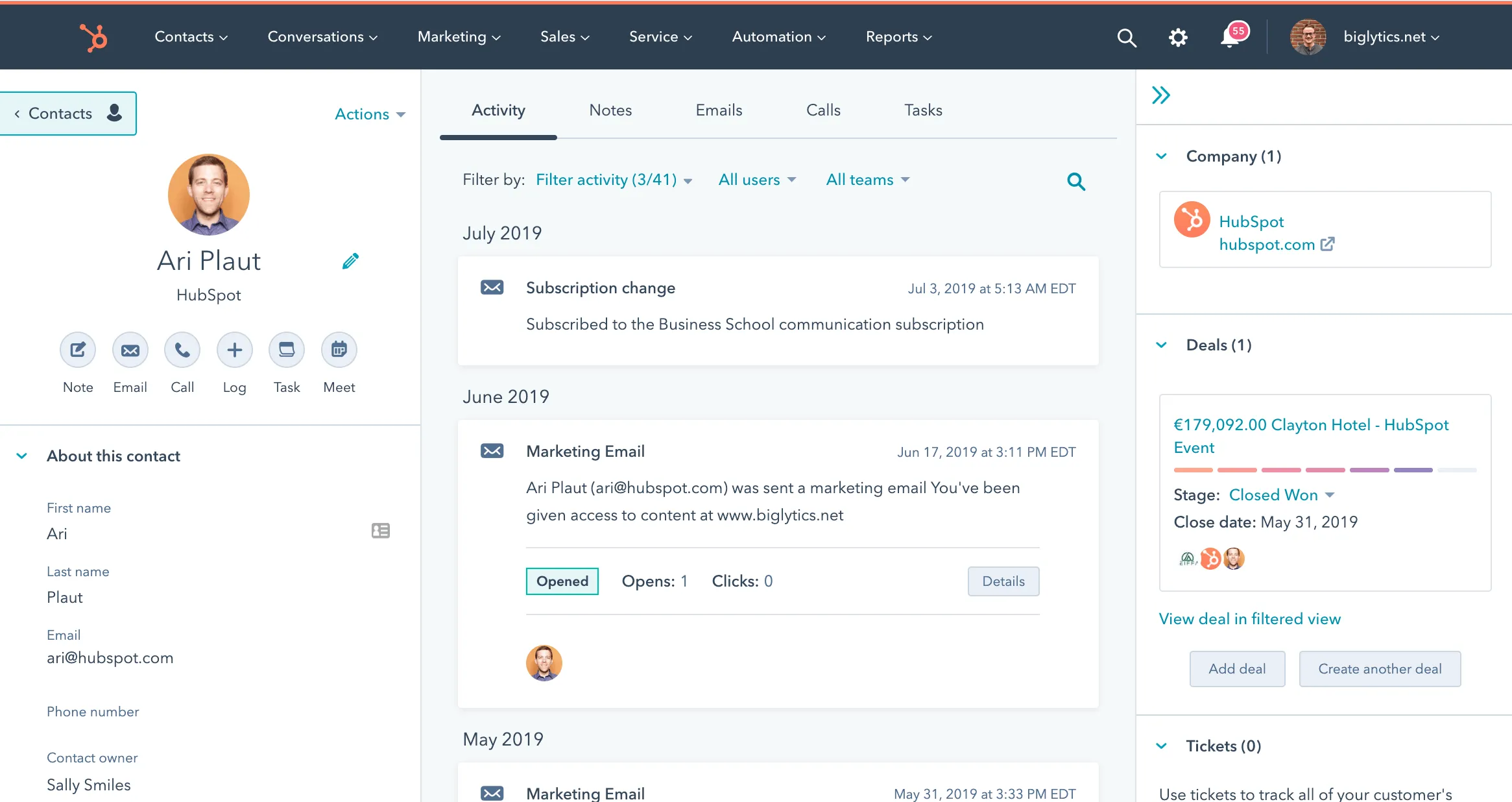
- Overview: HubSpot offers a comprehensive inbound marketing platform that includes CRM (Customer Relationship Management), email marketing, content management, and lead generation tools.
- Key Features: HubSpot’s lead generation capabilities include form builders, landing pages, social media management, and lead tracking. It integrates seamlessly with the CRM component to nurture leads through personalized email campaigns and content.
2. Salesforce
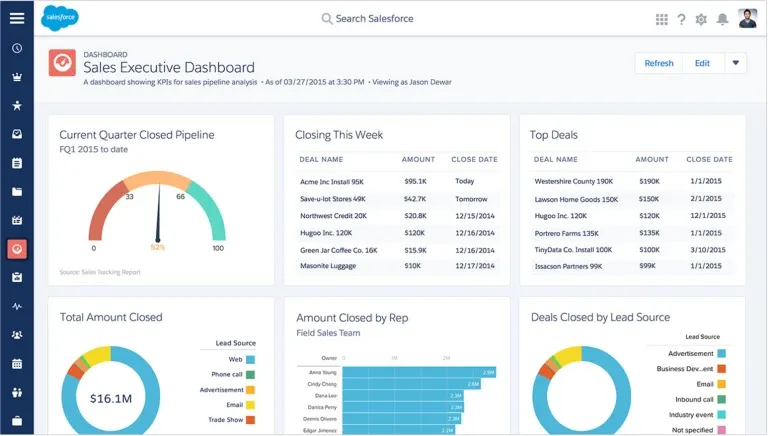
- Overview: Salesforce is a powerful CRM platform with robust lead management and generation features, suitable for businesses of all sizes.
- Key Features: Salesforce provides lead tracking, scoring, and nurturing tools, along with detailed analytics and forecasting capabilities. Its AppExchange offers numerous integrations for extending lead generation efforts.
3. Marketo

- Overview: Marketo, now part of Adobe Experience Cloud, is a leading marketing automation platform that excels in lead management and engagement.
- Key Features: Marketo offers email marketing, lead nurturing, lead scoring, and comprehensive analytics. It’s particularly well-regarded for its ability to automate complex marketing workflows and personalize interactions at scale.
4. Leadpages

- Overview: Leadpages specializes in creating high-converting landing pages and lead capture forms, making it an excellent tool for generating leads online.
- Key Features: With an intuitive drag-and-drop builder, Leadpages allows users to create custom landing pages without needing coding skills. It also offers pop-ups and alert bars to capture lead information effectively.
5. LinkedIn Sales Navigator

- Overview: LinkedIn Sales Navigator is a sales tool designed to help businesses find, understand, and engage with leads on LinkedIn.
- Key Features: It offers advanced search capabilities, lead recommendations, and insights into company data. Sales Navigator is ideal for B2B businesses looking to tap into LinkedIn’s vast professional network.
6. OptinMonster

- Overview: OptinMonster is a popular conversion optimization tool that helps businesses grow their email lists and improve lead generation efforts.
- Key Features: It provides a wide range of lead capture forms, including exit-intent pop-ups, floating bars, and fullscreen welcome mats. OptinMonster’s targeting and segmentation features ensure that messages are tailored to the visitor’s behavior and preferences.
7. Unbounce

- Overview: Unbounce is a tool for creating and testing custom landing pages, pop-ups, and sticky bars to increase lead conversion rates.
- Key Features: Unbounce’s drag-and-drop builder makes it easy to design landing pages without coding. Its A/B testing and dynamic text replacement features help in optimizing pages for higher conversions.
8. Drift
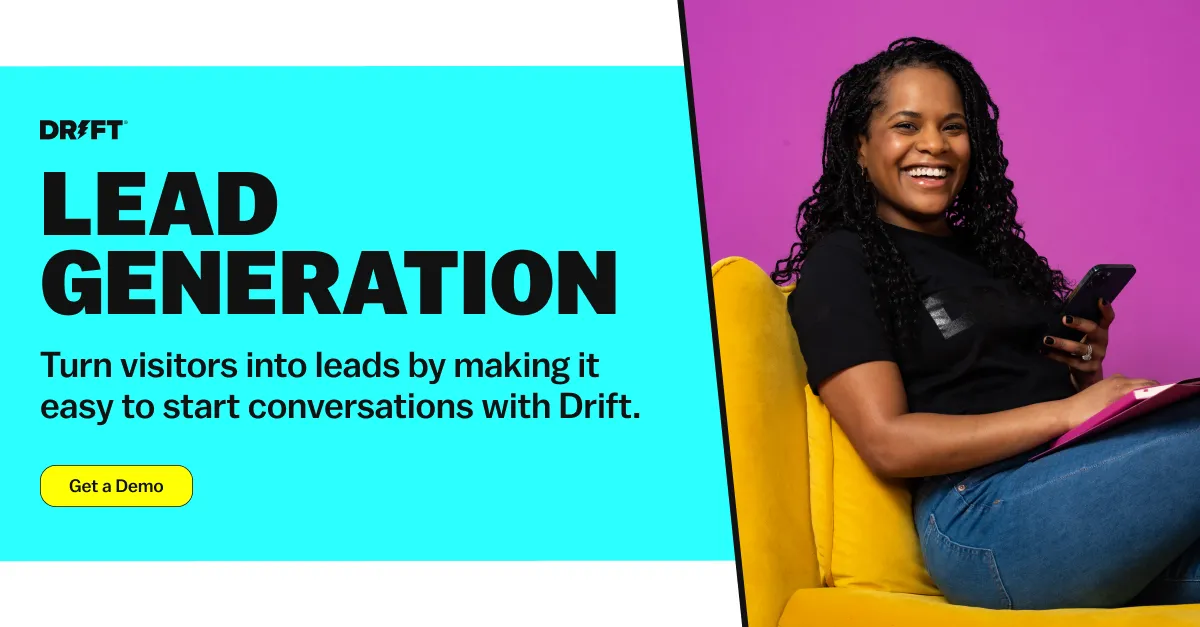
- Overview: Drift is a conversational marketing platform that offers live chat and chatbots designed to generate leads by engaging website visitors in real-time.
- Key Features: Drift allows businesses to qualify leads instantly through automated conversations, schedule meetings, and integrate with email marketing and CRM tools for a seamless lead nurturing process.
Concluding Thoughts
To sum up, effective lead generation is crucial for fueling business growth and building a strong sales pipeline. It's all about converting initial interest into actionable sales opportunities. The synergy between marketing and sales teams is key to refining strategies and targeting high-quality leads. By consistently measuring and optimizing campaigns based on solid metrics, businesses can achieve a more efficient, cost-effective way to boost sales and revenue. A strategic approach to lead generation is indispensable for sustained business success.





.jpg)

.jpg)
